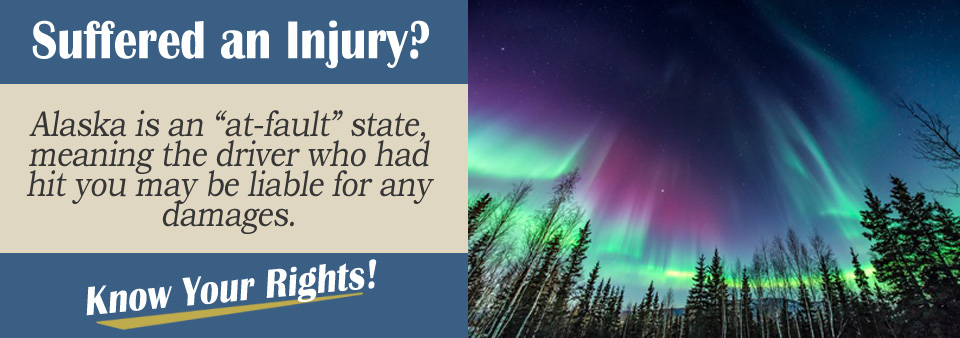Alaska is the least densely populated state, and it’s also the largest. In other words, since there aren’t as many people around one another in any given space, it should be easier to avoid car accidents in Alaska.
The problem is that people can be careless or willing to perform illegal maneuvers no matter how sparsely or densely populated the area in which they live is. This can cause accidents, and if you’ve been in one, you may have suffered some injuries.
Talk to an attorney if you’ve been injured in a car accident with someone breaking Alaska’s driving laws; you may deserve compensation for your injuries.
Specific Rules in Alaska
These are some of the specific driving laws in Alaska that are good to know.
-
Seatbelts: In Alaska, any vehicle occupant over the age of 16 is supposed to wear a seatbelt. In 2006, Alaska’s legislature voted to make it a primary traffic offense not to wear a seatbelt, upgrading it from a secondary offense.
-
Drunk driving: Driving with a blood alcohol content (BAC) of 0.08 is against the law in Alaska. Drivers under 21 who have any alcohol in their systems while operating in a vehicle are breaking the law. Alaska doesn’t require first-time offenders to use an Ignition Interlock Device (IID).
-
Open container laws: There can be no open containers in the passenger section of the car. However, drivers can transport open containers in the trunk of their car, and passengers are allowed to handle and drink from open containers while they are in the vehicle.
-
Distracted driving: Texting and driving is illegal statewide. Alaska also happens to have a very severe penalty for texting and driving--a maximum fine of $10,000 and up to one year in prison. This kind of deterrent makes it surprising that anybody would text and drive in Alaska.
Distracted Driving in Alaska
It can be helpful to see how this law would work in a real-life scenario, so let’s use distracted driving as an example. If someone T-boned your car because he was texting while driving, then you could be eligible to file a personal injury claim in Alaska.
Alaska is an “at-fault” state when it comes to dealing with seeking compensation for an accident, which means that you have a few options. You could file a claim with the driver’s insurance company or file a personal injury claim.
Do all that you can to determine fault, and then consider what seems to be the best option for your particular case.
Find an Attorney Who Can Help You
When you’re going through that decision process about your legal recourse, consider contacting a personal injury lawyer.
He or she will be in a good position to give you useful insight and ultimately help you with what decision you should make, and if you file a personal injury claim, you wouldn’t even have to pay your attorney unless you win your case.
Find a knowledgeable PI attorney today; you shouldn’t have to go it alone.
